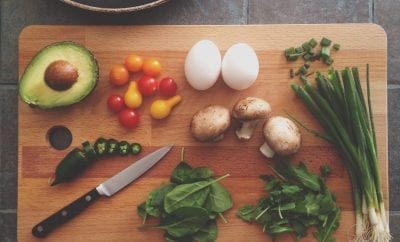Lifestyle
Stop Wasting Food With These Smart Tips
More than 30% of all food produced globally is wasted or spoiled, and it is becoming quite a problem, especially in America. Did you know that the average four-person household spends $1,500 a year on food they toss out? That equates to 40% of the food bought by Americans ending up in a landfill. This is not only bad for your wallet, but food waste contributes to large amounts of methane emissions that contribute to climate change. Despite this senseless waste, more than 49 million Americans live in conditions that don’t allow sufficient access to quality nutritious food. Becoming more aware of your food consumption can help you avoid wasting your food and contributing to these numbers. Start reducing your waste today with these smart tips.
Shop smart
While this sounds simple, it is something we often fail to do well, with our grocery cart becoming packed with unnecessary items. We get into the habit of not wanting to go grocery shopping often, so we try to limit our trips to get groceries to once every 1-2 weeks. This may save you time, but the mass amount of groceries you are buying have a high probability of going to waste in the end. To get around this, visit the grocery store more often, and plan out your meals with a detailed list of ingredients and items.
Utilize leftovers
Saving leftovers can make for a great way to have a ready-to-go meal for another day. Pack left overs for lunch the next day, or freeze them for later. A good way of making sure your leftovers don’t spoil is to label them by date when you put them into your refrigerator or freezer. You can incorporate them into a daily routine, so no food goes to waste.
Keep clutter to a minimum
When your fridge gets unorganized, it’s easy for items to get “lost”. When it’s out of sight, you don’t think about it, and that’s when we see the greatest waste of food. By keeping everything nice and neat, you are able to clearly see your food inventory. It is a good idea of following a “first in, first out” policy, so that older products are consumed first, while newer products are added.

Photo from istolethetv via Flickr CC by 2.0
Keep track of what you throw away
Keeping a log of what you end up throwing away is a good idea to get a visual representation of the amount of food you’re wasting. An easy way to do this is keeping your receipts from each grocery shopping trip, and once an item is thrown away, highlight it on the receipt. This way, you can the amount of money being wasted, as well as the amount of food.
Got Fruit Trees?
San Diego is great for growing and many households have fruit trees in the yard. These trees generally churn out more fruit than one family can eat. Don’t let the excess go to waste. The County of San Diego suggests utilizing Feeding San Diego and the San Diego Food System Alliance which have links to “gleaner” groups that can collect your extra bounty to help feed those in need.
Composting
Leftover food and food scraps don’t have to go in the trash – they can go into a compost or worm bin instead. Composting turns your leftover food into healthy organic compost and fertilizer that can re-inject nutrients back into your garden or lawn’s soil. Using compost can also cut water use, improve crop production and save money by not having to buy soil.

Photo from Kirsty Hall via Flickr CC by 2.0
Donate to food banks
Before throwing away excess food, check out any local food banks that will accept your items before they go bad. This can be a great way to help those in need, as well as cut back on wasting your food. You can find local food banks using Feeding America.






0 comments